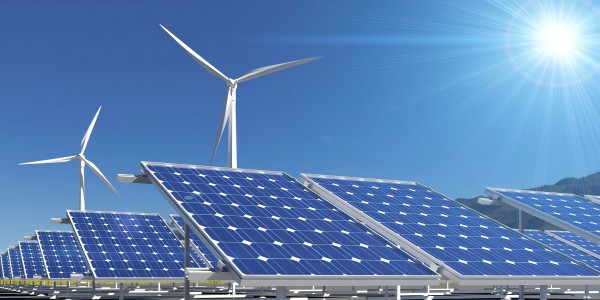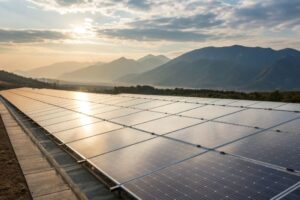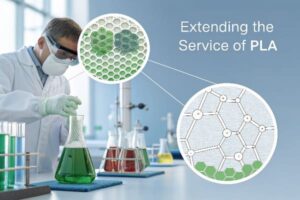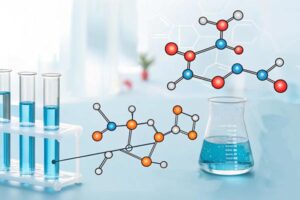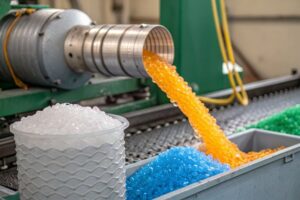Introduction
Solar power plants’ long-term profitability is determined by the stability and efficiency photovoltaic modules. The PV modules can suffer from Possible Induced Decay (PID) during prolonged operation. This phenomenon leads to a reduced power output and lower efficiency. It may even pose safety risks for the whole PV system. PID can have a major impact on the energy yield from PV installations.
It is important to know why PV modules suffer from PID. How this occurs and what can be done to mitigate or prevent its effects are all crucial for ensuring the performance and reliability of solar power systems over time. This article explores the causes of PID and its impact on PV Modules, as well as effective solutions for the problem.
What is PID?
PID (Potential-Induced Degradation) is a form of degradation of PV modules due to migration ions caused by high voltages, environmental conditions and material properties. This occurs when the solar cell and other components such as the frame or encapsulation material have a large potential difference.
mobile sodium ions (Na+), from the glass or encapsulant, can migrate into solar cells and disrupt their electrical properties. The result is an increase in leakage and degradation of the passivation layers of the solar cells. This ultimately reduces their efficiency and output. The most common PID cases are in large PV systems operating at high voltages (typically over 600V) where the electric fields across the layers of the modules is strong enough for ion movement.
Why are PV modules affected by PID?
PID is caused by a combination electrical, material and environmental factors. PID is primarily caused by:
1. The Impact of Potential Difference
Electrical grounding is crucial in determining if PID occurs. When a solar panel operates at high voltages, especially in systems with positive grounding, a strong electric field inside the module is generated. This causes ions to migrate away from the encapsulating materials and toward the solar cells.
- Negative Grounding Systems are more vulnerable to PID, because the voltage difference forces sodium ions out of the glass or encapsulants and into the solar cell. This degrades their electrical characteristics.
- Positive Grounding Systems can mitigate PID, however, by changing the direction of the ion migration, or reducing the strength of the field that drives the ion movement.
2. Humidity and temperature impact
The environment plays a crucial role in the severity and duration of PID. High humidities, and high temperatures increase the movement of mobile ions. This makes PID worse. PV modules in tropical climates or coastal areas are more susceptible to PID degradation.
- High humidity can increase the conductivity in the encapsulation material. This allows ions to flow more freely within the module.
- High temperatures increase ion mobility and accelerate PID effects.
3. Influence of Encapsulation Material
Materials used to construct PV modules have a significant impact on PID resistance. PID resistance is influenced by two materials:
- The Front Glass contains sodium (Na+), which can migrate to the cells if exposed to high voltages and humidity.
- Encapsulant: Ethylene Vinyl Acetate (EVA), commonly used for PV module encapsulation can allow ion movement, increasing the PID risk.
4. Effects of Grounding Method
The method of grounding used in PV installations has a direct impact on the PID.
- Negative Grounding Systems (where a negative pole is grounded), are susceptible to PID, because high voltages drive ion migration towards the solar cells.
- Positive Grounding or Floating Systems Reduce the risk of PID through minimizing voltage stress on the module.
The Effects of PID On PV Modules
PID can negatively impact the performance and reliability PV systems. PID has a number of primary impacts, including:
1. Power Degradation
In extreme cases, the power output of PV modules affected by PID can drop by 10-30%. The overall output of the solar plant is affected, as the energy generated over time decreases.
2. Leakage currents Increased
As PID advances, the insulating qualities of module materials degrade. This leads to increased currents. This can result in energy losses, decreased safety and possible system failures.
3. Reduced Insulation Performance
PID can weaken the insulation of the module and increase the risk of electric shocks, short circuits, or system malfunctions. PID may cause premature module failure in severe cases.
4. Low Return on Investment (ROI).
PID decreases the efficiency and therefore the returns on solar power plants. A lower power output results in less electricity being generated, which leads to a longer return on investment for investors.
How can PID be prevented and mitigated?
PV manufacturers and solar plant operators can take several measures to minimize PID-related degradation of performance.
1. Use anti-PID encapsulation materials
The use of high-quality materials can reduce the risk for PID by a significant amount:
- Low sodium glass: By reducing the sodium content of glass, the number mobile ions that can migrate is minimized.
- Encapsulants made of high-quality EVA: EVA formulations that have a lower ionic conductivity help to prevent PID.
2. Solar Cell Design Optimized
Solar cells can be made more resistant to PID by using certain manufacturing techniques.
- PID resistant passivation layers : By improving the passivation, solar cells can be protected from ion-induced degradation.
- Surface Treatments: Advanced coating techniques can increase the resistance of cells to PID effects.
3. Implement Proper System Grounding Design
Changing the grounding configuration for a PV system may help reduce PID risk:
- By using positive grounding in place of negative grounding, you can reduce ion migration.
- By using neutral or floating grounding systems, you can reduce the voltage across modules.
4. Utilize Anti-PID Additives
Anti PID Additives are one of the best ways to reduce PID. These additives are specially-formulated compounds that:
- Reduce the ion mobility in encapsulation layer.
- Stop the formation of leakage Currents which contribute to PID.
- Protect the passivation layer on solar cells to extend module life.
Some advanced anti-PID additives are able to be incorporated in EVA or backsheet material, improving the module’s resistance to PID. This is especially true for hot and humid climates.
Conclusion
PID can have a significant impact on the performance of PV modules over time. Unaddressed PID can result in power losses, reduced system reliability and financial setbacks to solar investors. PID’s impact can be reduced by using high-quality materials for encapsulation, optimizing the manufacturing of solar cells, designing effective grounding system, and using Anti-PID additives.
In the future, as the solar industry evolves, research and technology advancements in materials that are resistant to PID and module designs play a vital role in ensuring long-term profitability and stability of PV systems. Solar energy stakeholders who take proactive measures can protect their investments and maximize their solar power plant’s efficiency.

